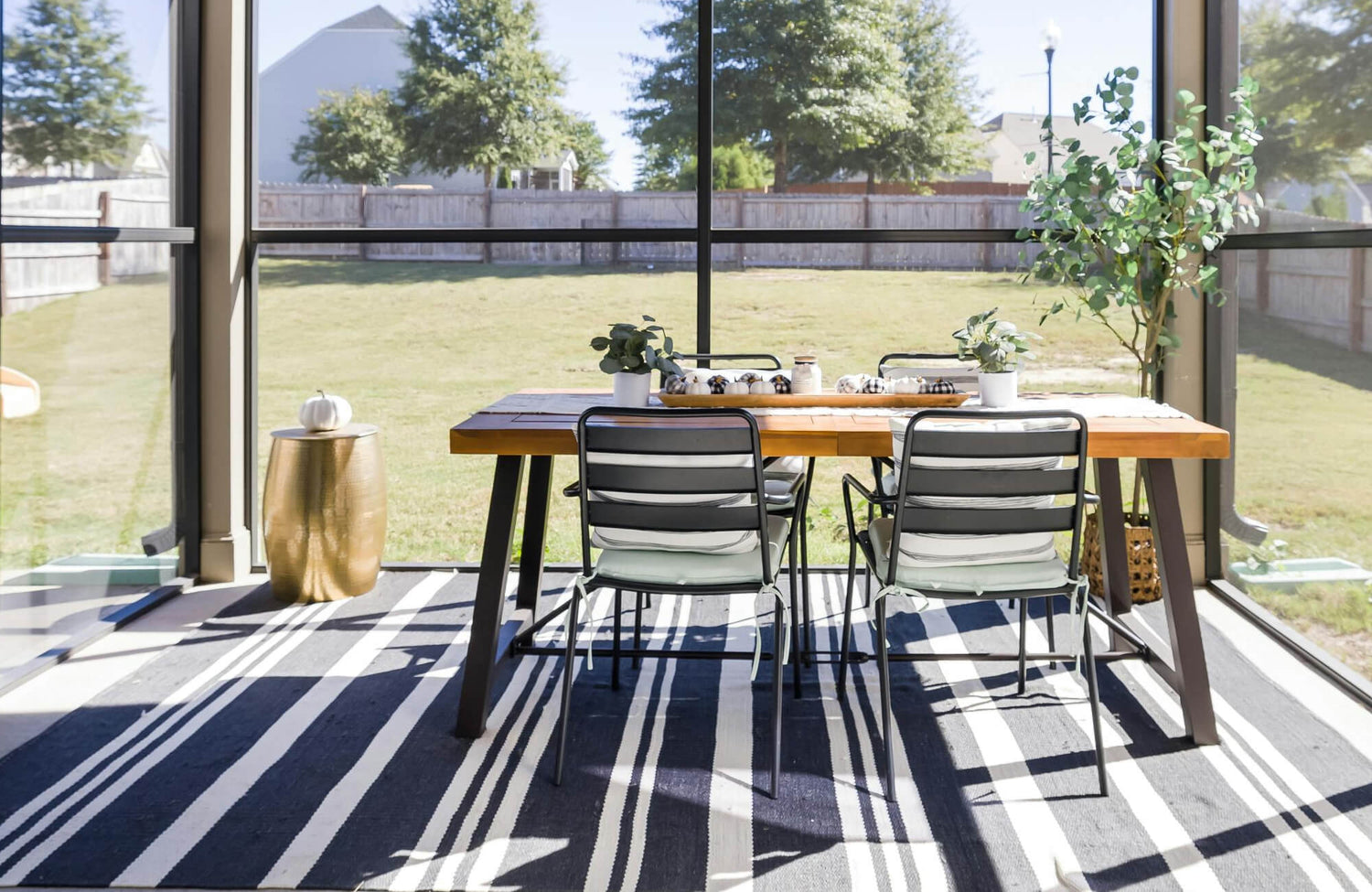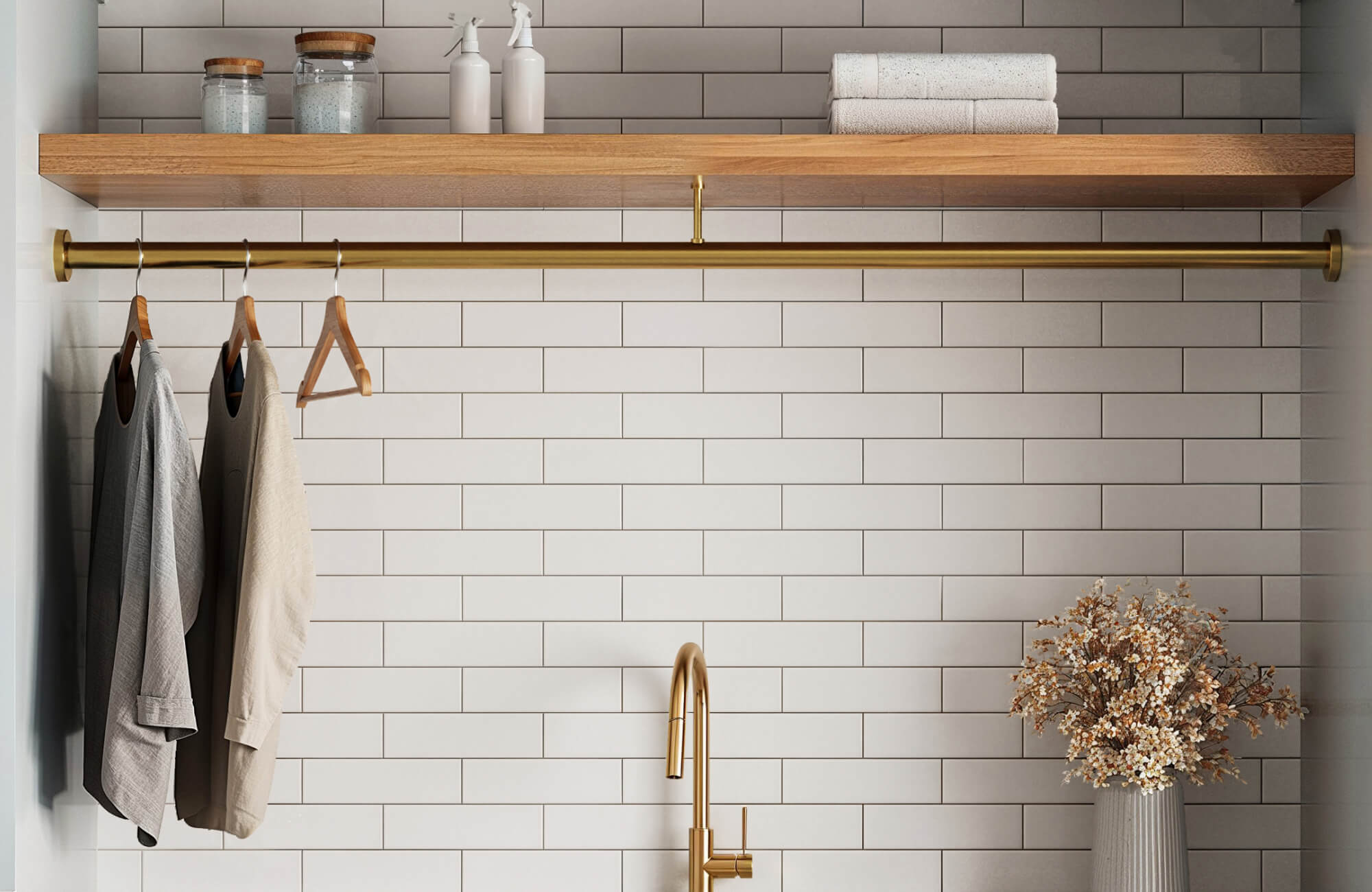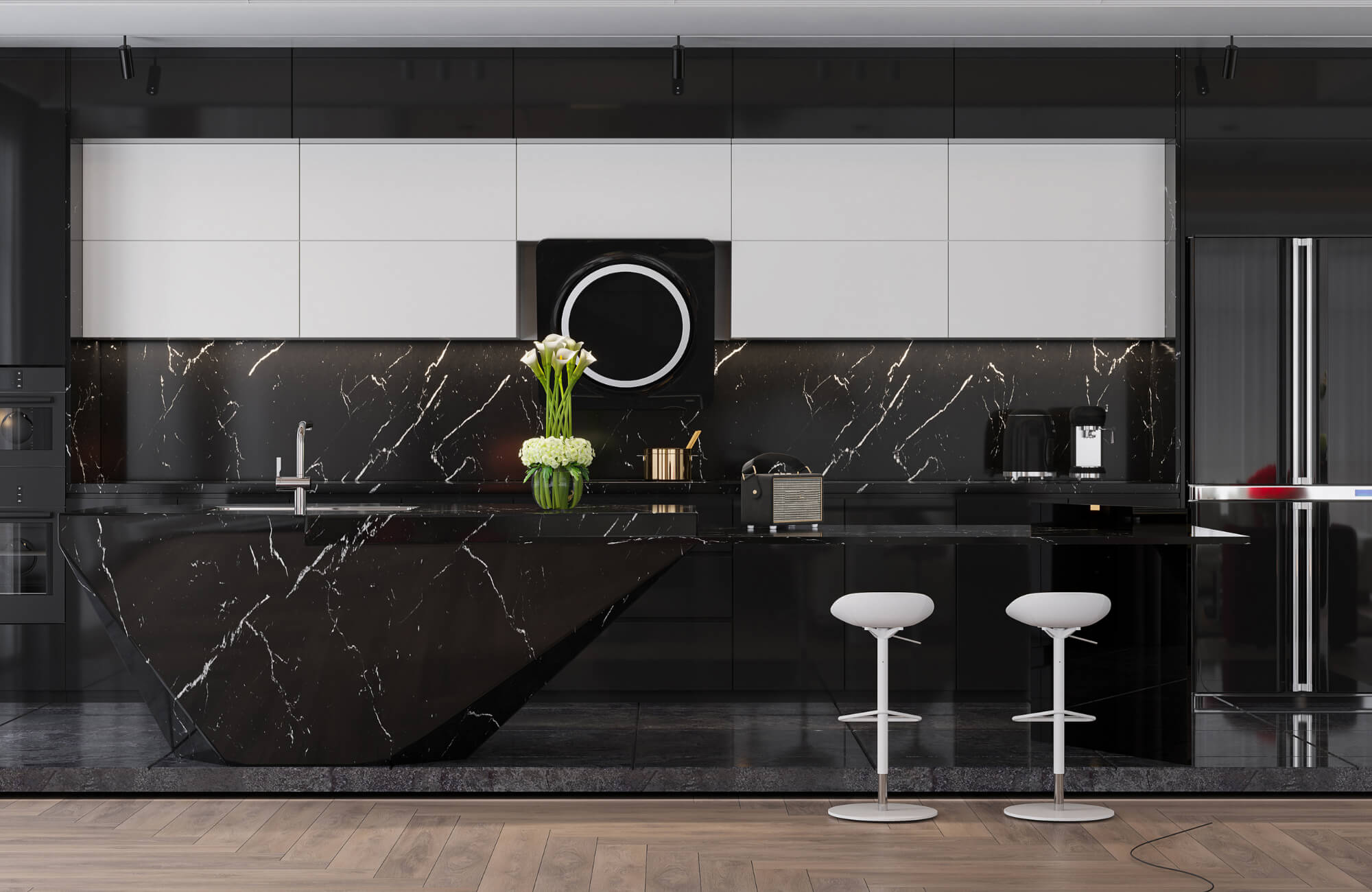Polypropylene rugs, known for their affordability and durability, are a popular choice for many homes. However, a common concern among potential buyers is whether these rugs retain heat, especially in warmer climates. Examining how polypropylene responds to heat can reveal where it performs best and where added precautions may be necessary.
Understanding Polypropylene’s Material Properties
Polypropylene is a synthetic fiber celebrated for its resilience, stain resistance, and cost-effectiveness. Yet beyond durability and aesthetic appeal lies a lesser-known trait—its thermal behavior. We need to examine the science behind the fiber to determine how hot polypropylene rugs can get.
Polypropylene is derived from propylene monomers and structured as a thermoplastic polymer. This means the material softens when exposed to heat and returns to a firm state when cooled. It’s this thermoplastic quality that plays a central role in how polypropylene responds to temperature changes. Unlike natural materials that breathe and disperse heat, polypropylene tends to retain it, which can affect surface temperature, especially when used in sun-drenched spaces or enclosed environments.
Several key characteristics contribute to polypropylene’s thermal tendencies: its low moisture absorption, non-porous surface, and high resistance to environmental degradation. These traits make it ideal for long-term use but also mean that heat is neither absorbed deeply nor released efficiently. As a result, the surface of a polypropylene rug may feel warm to the touch under certain conditions.
When assessing whether polypropylene rugs get hot, it’s essential to factor in not just the material’s inherent qualities but also the surrounding environment, usage patterns, and installation location. From fiber structure to external influences, every variable matters in understanding heat dynamics.
Polypropylene’s Molecular Structure and Heat Transfer
Polypropylene consists of long-chain hydrocarbon molecules with a semi-crystalline structure. These tightly packed polymer chains limit internal airflow and reduce the fiber's ability to release heat efficiently. The material’s low thermal conductivity, around 0.1–0.22 W/m·K, also means that once heat is absorbed, it dissipates slowly.
Compared to porous fibers such as wool, polypropylene’s lack of microscopic voids reduces thermal exchange with the surrounding air. Its smooth, non-absorbent surface doesn’t retain moisture, further limiting natural cooling. While this structure provides water resistance and ease of cleaning, it also contributes to a higher surface temperature in sunlit or poorly ventilated areas.
By contrast, natural fibers typically feature greater breathability and higher moisture regain, which helps disperse warmth more effectively. This molecular composition gives polypropylene rugs a tendency to hold onto heat, especially when subjected to radiant energy or ambient warmth.
Understanding the structural makeup of polypropylene helps explain why these rugs can feel warmer than natural options. Its thermal inertia means it holds heat longer, especially in enclosed or sun-exposed spaces.
Comparing Polypropylene to Natural Fibers Thermally
When compared to natural fibers like wool, cotton, or sisal, polypropylene exhibits a distinct thermal profile. Wool, for example, is a protein-based fiber with a crimped structure that traps air, creating natural insulation. This makes wool rugs an excellent choice for maintaining a balanced feel underfoot across seasons. A perfect illustration is the Everson Wool Blend Rug in Sand, which blends natural wool with breathable synthetics to offer enhanced comfort and thermal moderation in both warm and cool interiors.
Cotton, with its breathable cellulose-based structure, also offers excellent ventilation and a high heat capacity, allowing it to stay relatively cool under pressure.
Polypropylene, on the other hand, lacks the fibrous air pockets and hygroscopic properties of these natural alternatives. It has a lower heat capacity and a denser weave, meaning it can feel warmer under similar conditions. Edward Martin’s Broderick Polypropylene Pile Rug in Coffee / Bronze is a great example, which features tightly packed fibers that contribute to its rich texture and long-lasting structure. While ideal for high-use areas, its dense polypropylene composition may retain more surface warmth in sunlit or minimally ventilated interiors, making it particularly well-suited for cooler rooms where extra underfoot warmth is a benefit.
Sisal, another natural fiber often used in rugs, is more breathable and has a rougher texture, which allows for better airflow and cooler surface contact.
While natural fibers generally offer better thermal comfort, polypropylene excels in moisture resistance, affordability, and low maintenance. The tradeoff, however, is a higher tendency to warm up in sunlit or enclosed spaces. Natural fibers also regulate temperature better due to their porous and breathable structures. Polypropylene, while advantageous in durability and resistance, retains more surface heat, especially in warm climates or poorly ventilated settings.

Environmental Factors Affecting Rug Temperature
Polypropylene’s thermal performance doesn’t exist in a vacuum. Environmental conditions play a critical role in how hot the rug becomes. Two of the most influential factors are sunlight exposure and indoor airflow.
Direct Sunlight and Radiant Heat Impact
Sunlight is a major contributor to heat buildup in any material. Polypropylene rugs, especially in darker shades, can absorb and retain substantial heat when exposed to direct solar radiation. As UV rays penetrate the fiber surface, they gradually increase the rug’s temperature often to levels that can feel noticeably warm or uncomfortable underfoot.
The rug’s color also plays a role: dark hues absorb more radiant energy, while lighter shades reflect some of it, helping to moderate temperature. Additionally, proximity to windows, skylights, or glass doors can intensify this effect due to magnified radiant heat.
UV exposure not only increases surface warmth but also accelerates fiber degradation over time. While polypropylene is UV-stabilized to some extent, prolonged exposure in sunny environments can still result in fading or surface wear.
To minimize these effects, strategic placement becomes essential. Positioning rugs away from direct sunlight or using UV-filtering window treatments can significantly reduce heat buildup and help preserve the rug’s appearance and structural integrity.
Room Temperature and Ventilation Influences
Indoor conditions significantly affect how warm a polypropylene rug will feel. In poorly ventilated spaces, stagnant air traps heat, causing rugs to absorb ambient warmth and remain hot longer. Without airflow, the heat has nowhere to escape, compounding the effect of the rug’s low thermal conductivity.
In contrast, well-ventilated rooms with fans or open windows help disperse heat and lower surface temperatures. Air circulation reduces thermal stagnation, enhancing comfort, especially in warmer months. HVAC systems can also play a role; rugs near vents may benefit from more consistent temperatures.
Thermostat settings, flooring type beneath the rug (such as tile vs. carpet), and insulation levels all contribute to the thermal environment. Polypropylene’s sensitivity to such factors makes strategic placement essential for maintaining comfort.
Equally important is managing airflow. Proper ventilation and ambient temperature control can go a long way in minimizing heat buildup. Even simple circulation solutions can noticeably enhance thermal comfort and keep the rug cooler throughout the day.

Practical Applications and Usage Scenarios
To fully understand polypropylene’s performance, it’s helpful to examine real-world applications where thermal behavior plays a pivotal role. From sunlit patios to cozy interiors, use cases vary widely.
Outdoor Patio and Deck Applications
Polypropylene is often marketed as outdoor-friendly due to its water resistance and UV stability. However, when placed on sun-exposed decks or patios, these rugs can become noticeably hot. Direct exposure to midday sun can cause the surface to reach uncomfortable temperatures, especially in darker colorways.
Despite this, polypropylene holds several advantages outdoors. Its resistance to mold, mildew, and moisture makes it ideal for poolside setups or damp environments. Additionally, it doesn’t absorb water, which prevents sogginess after rain. UV inhibitors in some polypropylene rugs offer added protection, though shade or covering is still recommended for longevity.
Rolling up or relocating the rug during peak sun hours, or placing it under pergolas or canopies, can help manage heat. Pairing with outdoor furniture cushions or footwear also minimizes direct skin contact.
Ultimately, while polypropylene rugs are well-suited for outdoor use, they benefit greatly from shade and thoughtful placement. These protective measures not only enhance comfort but also extend the rug’s durability in sun-exposed environments.
Indoor High-Use Areas and Underfloor Heating
Inside the home, polypropylene rugs are frequently used in high-use zones like entryways, hallways, and living areas. Their low cost and resilience make them ideal for heavy use, but the temperature still matters, especially when paired with underfloor heating.
Underfloor systems can intensify polypropylene’s heat retention. Because the material resists moisture and airflow, warmth from below may build up rather than diffuse, potentially causing the rug to feel hotter than anticipated. While most polypropylene rugs tolerate moderate radiant heat, exceeding safe temperature thresholds (usually 85–90°F) can cause softening or warping.
Safety is another consideration. Ensure that the rug is rated for use with radiant heating, and consider using breathable pads or spacers to promote heat dispersion. Designs like Edward Martin’s Broderick Polypropylene Pile Rug in Taupe / Stone feature a dense, low-profile construction that retains warmth efficiently, making it ideal for cooler interiors where underfoot coziness is appreciated. However, in radiant-heated spaces, it’s important to monitor surface temperatures to prevent excessive heat retention and ensure comfort.
With the right precautions, polypropylene rugs can perform well in high-use indoor areas; however, they do require careful attention when used over heated floors. Selecting heat-compatible products and monitoring temperature levels also helps prevent discomfort and safeguards the rug from potential material degradation.

Polypropylene Rug Performance in Extreme Temperatures
While daily comfort is a key concern, polypropylene rugs are also tested by extreme seasonal temperatures, ranging from scorching summers to frosty winters. Understanding how this synthetic fiber reacts to temperature extremes can help buyers make informed decisions for both indoor and outdoor applications.
Heat Resistance and High-Temperature Exposure
In regions with prolonged high temperatures, such as deserts or coastal climates, polypropylene rugs are often exposed to intense heat for extended periods. Though the material is engineered for durability, polypropylene begins to soften at around 130–170°F (54–77°C), which is lower than some other synthetics. This means surfaces like metal decks, sunlit concrete, or dark tiles can cause surface deformation or discoloration when radiant heat is intense.
Outdoor polypropylene rugs with UV stabilizers fare better under direct sun, but even these can show signs of warping or curling if left in place without protection during peak heat. Indoors, excessive sunlight through large windows may also accelerate wear if the rug is unprotected.
To extend performance, it’s best to use rugs in shaded or covered areas, install protective window treatments, or lift rugs during heatwaves. For high-heat environments, lighter shades and breathable rug pads are especially helpful in managing surface temperature.
Polypropylene rugs can withstand moderate heat, but prolonged high-temperature exposure may cause material changes. Protective placement and accessories can safeguard appearance and function.
Cold Climate Resilience and Winter Use
In cold climates, polypropylene rugs remain stable and functional, making them a reliable choice for winter homes, basements, or outdoor porches. Unlike natural fibers that may stiffen or degrade in freezing temperatures, polypropylene retains its flexibility and resists cracking or fraying. Its low moisture absorption also prevents freeze-thaw damage, which can be a concern for rugs exposed to snow, sleet, or condensation.
This thermal resilience makes polypropylene ideal for areas like garages, mudrooms, or covered patios that endure seasonal cold. However, it’s important to note that while the rug remains intact, the surface may feel firmer or less comfortable underfoot in sub-zero environments. Layering the rug with a thick pad can offset this sensation and provide added insulation.
Additionally, polypropylene’s resistance to mold and mildew means it can be stored during off-seasons without risk of deterioration, making it a smart choice for seasonal usage.
In cold conditions, polypropylene rugs remain durable and low-maintenance. Their freeze-resistant structure and water-repellent surface make them ideal for winter applications, provided comfort is enhanced with proper layering.

Maintenance and Mitigation Strategies
Managing rug temperature is achievable with the right maintenance routine and preventive tools. These strategies ensure comfort while protecting both the rug and the underlying surface.
Cleaning and Ventilation Techniques
Dirt, dust, and debris trapped in rug fibers can act as insulators, contributing to additional warmth retention. Regular vacuuming or washing removes this insulating layer, promoting better airflow and reducing heat buildup.
Equally important is maintaining proper room ventilation. Fans, vents, and open windows create circulation patterns that dissipate accumulated heat from the rug's surface. In humid climates, dehumidifiers can also prevent heat intensification due to moisture-laden air.
In addition, lifting the rug periodically to allow the floor beneath to breathe can be an effective way to prevent thermal trapping, especially on hard surfaces like wood or tile.
Combined with routine cleaning and consistent airflow, this simple step contributes to better temperature regulation. Maintaining a clean, well-ventilated environment helps keep polypropylene rugs cooler and supports their long-term performance.
Rug Pads and Protective Measures
Using a rug pad beneath a polypropylene rug can dramatically influence its thermal behavior. Pads create a buffer zone that limits direct heat transfer from the floor, especially useful in sunlit or radiant-heated rooms.
Opt for ventilated, non-slip rug pads designed to encourage airflow and thermal regulation. In outdoor settings, raised or breathable mats help elevate the rug slightly, preventing direct contact with hot surfaces like concrete or composite decking.
Additional strategies include using curtains or blinds to block excessive sunlight, rotating rugs seasonally, or selecting lighter-colored designs to reflect rather than absorb heat.
When combined with rug pads and thoughtful environmental controls, these techniques become highly effective in moderating polypropylene rug temperature, ultimately enhancing both usability and day-to-day comfort.
Managing Heat and Making the Most of Polypropylene Rugs
Polypropylene rugs combine durability, stain resistance, and affordability, but their tendency to retain heat, especially in sunny or enclosed spaces, requires thoughtful consideration. Understanding how their thermoplastic structure responds to environmental factors like sunlight and airflow allows you to make smarter decisions about placement, cleaning, and the use of rug pads or ventilation. With these strategies in place, you can fully enjoy the versatility and practicality of polypropylene rugs while maintaining a cooler, more comfortable environment.
If you're unsure which rug best suits your space or need help with placement strategies for thermal comfort, Edward Martin’s design services offer personalized guidance tailored to your home. Whether you're furnishing an open patio, a sunlit living room, or a high-use hallway, our expert team can help you make informed choices that balance aesthetics and performance. You can also contact us directly with any questions about products, styling, or installation considerations—we’re here to make every step of your rug journey seamless and stress-free.








